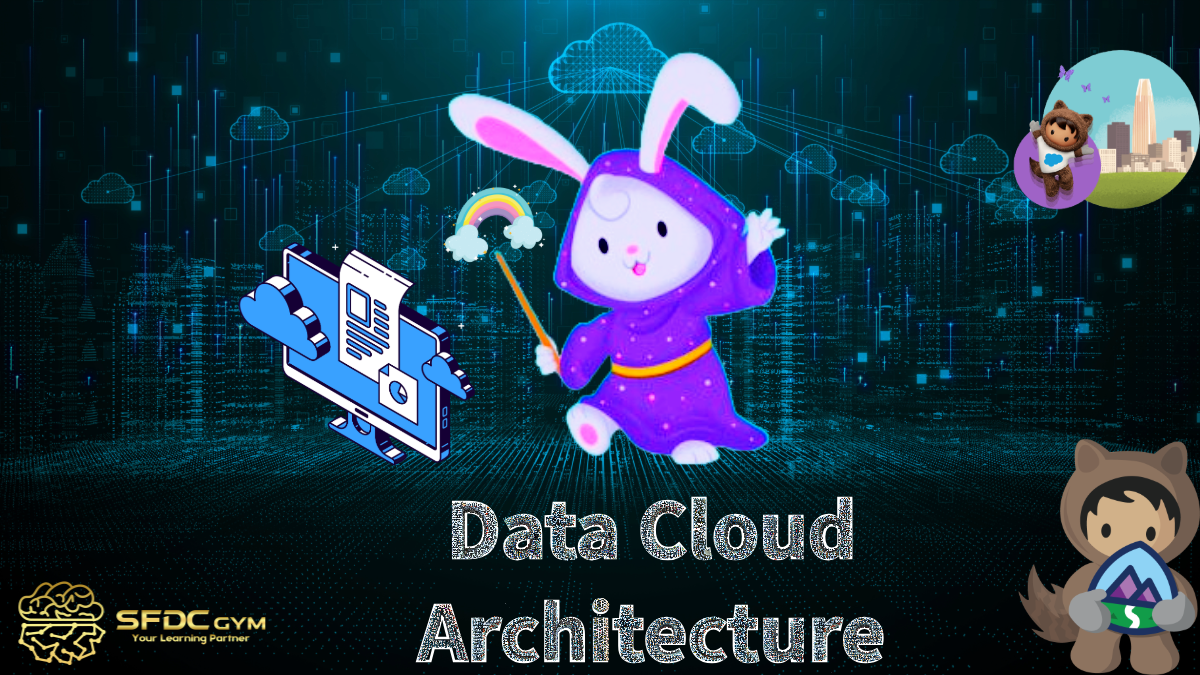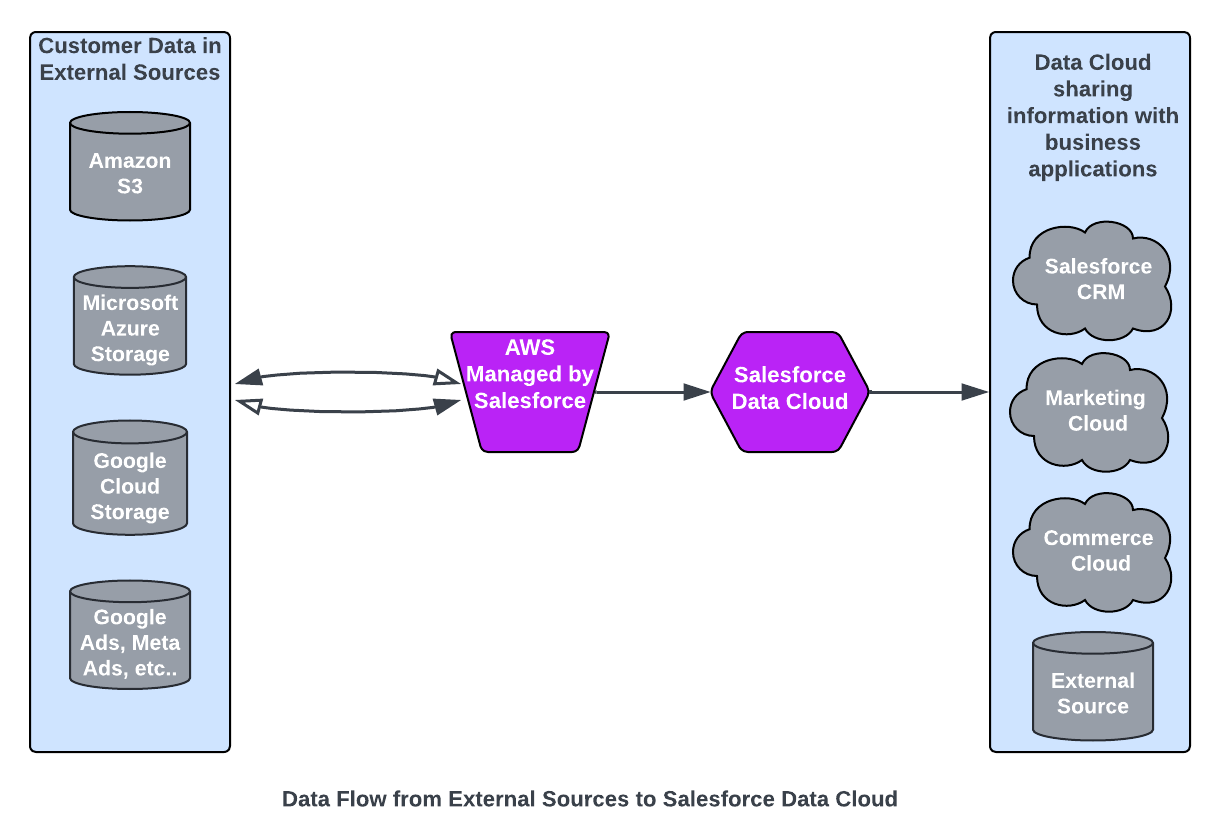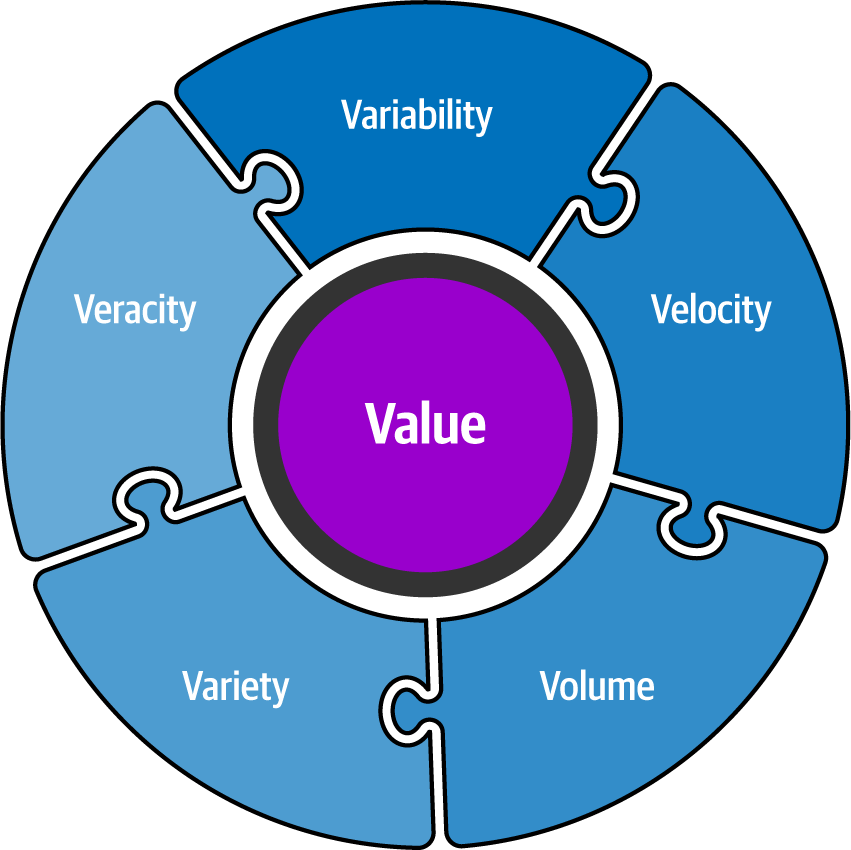Data Cloud Architecture



Data Cloud Architecture
In today's fast-paced digital world, managing vast amounts of data efficiently and securely is crucial. For IT professionals, data analysts, Salesforce developers, and Salesforce admins, understanding the intricacies of Salesforce Data Cloud can provide a significant edge. Designed to harness the power of cloud technology, Salesforce Data Cloud offers innovative solutions for storing, managing, and utilizing data. This blog post will guide you through the foundational aspects of Salesforce Data Cloud, emphasizing its unique features and how they can be leveraged to streamline data operations.
If you are new to Data Cloud and want to understand what it is, please click on this article for a comprehensive introduction.
Understanding Salesforce Data Cloud's Zero Copy Architecture
Salesforce Data Cloud is built on the robust infrastructure of AWS, providing a secure and scalable environment for data storage. One of its standout features is the Zero Copy pattern. Unlike traditional data management systems that duplicate data from its original source, Salesforce Data Cloud only retains essential information. This approach reduces redundancy, minimizes storage space, and ensures that data remains up-to-date and relevant. By employing this architecture, businesses can focus on what truly matters—driving insights and making data-driven decisions without being bogged down by irrelevant data copies.
Data stored within Salesforce Data Cloud remains directly accessible from its original source. This means that any updates or changes made to the data are immediately reflected across all connected platforms. This seamless integration ensures that users always have access to the most accurate and current information, facilitating smoother workflows and more informed decision-making.
Another benefit of the Zero Copy pattern is enhanced security. By reducing the number of duplicated data sets, the risk of unauthorized access or data breaches is minimized. Salesforce Data Cloud's approach ensures that sensitive information remains protected while still being easily accessible to authorized users.

Data Flow from External Sources to Salesforce Data Cloud
Data flow into Salesforce Data Cloud is both efficient and streamlined. External data lakes feed information into AWS instances, where it is securely stored and organized. From there, Salesforce Data Cloud acts as a central hub, connecting this data with various Salesforce platforms such as Salesforce CRM, Marketing Cloud, and Industry Cloud. This interconnected ecosystem allows businesses to harness comprehensive insights from their data, driving more effective strategies and outcomes.
This flow of data is facilitated by advanced data integration tools, ensuring that information moves seamlessly from external sources to the Salesforce ecosystem. These tools are designed to handle large volumes of data, maintaining high-quality standards while minimizing latency. This ensures that businesses can trust the data they receive, knowing it is both accurate and timely.
Furthermore, Salesforce Data Cloud's integration capabilities extend beyond just Salesforce platforms. It also supports connections with third-party applications, offering a versatile and flexible solution for businesses looking to expand their data management operations. This adaptability makes it easier for organizations to tailor their data strategies to meet their specific needs.

Creating Value with the 6 V's of Data
At the heart of Salesforce Data Cloud is the creation of value from data. This is achieved through a comprehensive understanding of the six dimensions of data, known as the Six Vs:
- Variability refers to the different types of data that businesses encounter. Salesforce Data Cloud is equipped to handle this variability, ensuring that all data forms are processed and utilized effectively.
- Velocity describes the speed at which data is generated and processed. Salesforce Data Cloud's infrastructure is designed to handle high-velocity data, enabling real-time insights and decision-making.
- Volume to the sheer amount of data that businesses deal with. Salesforce Data Cloud offers scalable solutions to manage large volumes of data without compromising performance.
- Variety speaks to the diversity of data sources and types. Whether structured or unstructured, Salesforce Data Cloud can manage and integrate diverse data sets, providing a holistic view of business operations.
- Veracity focuses on the accuracy and reliability of data. Salesforce Data Cloud employs advanced verification processes to ensure that data integrity is maintained across all platforms.
- Value the ultimate goal of data management—turning raw data into actionable insights that drive business growth. Salesforce Data Cloud is designed to maximize the value extracted from data, empowering businesses to achieve better outcomes.
By addressing each of these dimensions, Salesforce Data Cloud enables businesses to leverage their data more effectively, ensuring that they remain competitive and agile in an ever-evolving landscape.
Leveraging Cold, Warm, and Hot Data Storage Layers
- Cold Storage is used for data that is infrequently accessed but still necessary for compliance or historical analysis. This storage option is cost-effective, allowing businesses to retain large volumes of data without incurring high expenses.
- Warm Storage holds data that is accessed more regularly, such as monthly reports or ongoing projects. It provides a balance between accessibility and cost, ensuring that relevant data is readily available without overwhelming resources.
- Hot Storage is reserved for data that requires immediate access and processing, such as real-time analytics or operational data. This layer offers the highest performance, enabling businesses to make quick, informed decisions based on up-to-the-minute information
By utilizing these storage layers, Salesforce Data Cloud ensures that data is stored in the most appropriate and efficient manner. This approach not only optimizes storage costs but also enhances overall data management performance.
The Future of Data Management with Salesforce Data Cloud
In summary, Salesforce Data Cloud offers a revolutionary approach to data management, combining cutting-edge technology with practical solutions for modern businesses. Its unique features, such as the Zero Copy architecture and tiered storage model, provide a robust foundation for efficient and secure data operations. By understanding and leveraging the Six Vs of data, businesses can extract maximum value from their information, driving better strategies and outcomes.
For data analysts, Salesforce developers, Salesforce admins, and IT professionals, mastering Salesforce Data Cloud is a crucial step towards enhancing data management capabilities. With its ability to seamlessly connect with various platforms and integrate diverse data sources, Salesforce Data Cloud positions itself as an indispensable tool in the quest for efficiency and competitive advantage.
If you're ready to explore the full potential of Salesforce Data Cloud, consider signing up for one of our expert-led workshops or webinars. Engage with a community of like-minded professionals and gain deeper insights into how Salesforce Data Cloud can transform your organization's data strategy. Stay ahead of the curve and unlock new opportunities for growth and innovation.


